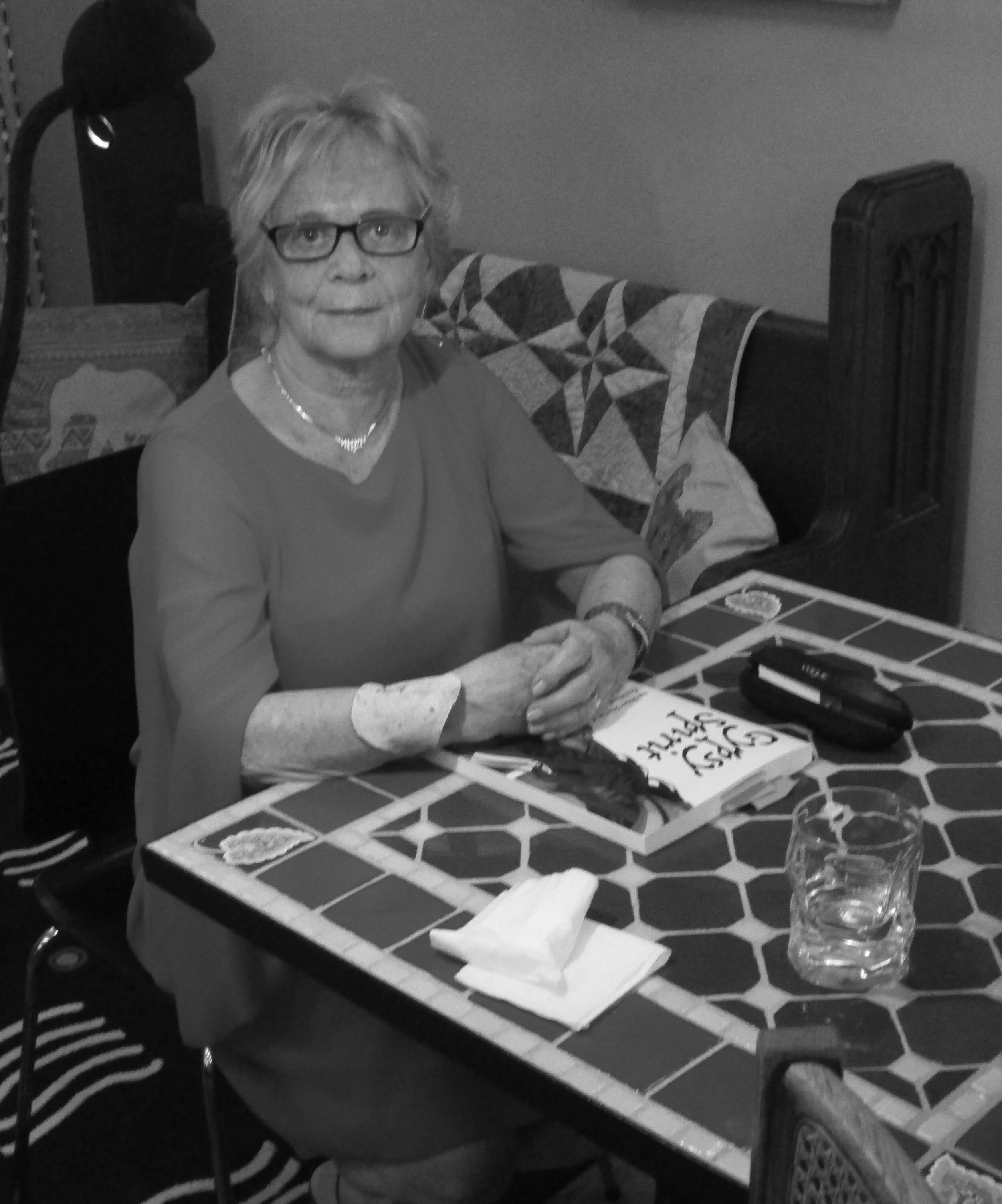
.WRITERS.ON.WRITING..Writers.on.Writing.
Get to know our authors, the foundation and heart of Yellow Arrow Journal, and what writing means to them through our monthly series.
.W.o.W. #27
Ute Carson
Describe an early experience where you learned that language has power.
I have been writing all my life. Inspiration came from my mother and both grandmothers, who read, told stories, and recited poetry from my infancy on. In elementary school, I had an inspiring teacher who ended each school day with a brief story. I was immersed in poetic language and started my first notebook in second grade. In third grade, a story about my pet rabbit was published in a German nature magazine. From then on, I never stopped writing. Writing is a passion and, like all passions, it never ceases. I have never experienced writer’s block.
If you didn’t write, what would you do?
I enjoy many other activities, especially in relation to my family and animals. Because ideas stay safely in my memory until I can find the time to write them down, interruptions don’t bother me. I used to write in longhand, but now composing on a computer keyboard has become routine. I have so many stories just waiting to be written. But I also enjoy the work of other writers.
What does your inner writing voice tell you?
My inner voice fills me with gratitude for my writing career, and that I am never without a story to tell or an image for a new poem.
Ute Carson published her poem, “Risks Around Each Corner,” in Yellow Arrow Journal’s Vol. V, No. 3 issue (Re)Formation. She also joined other (Re)Formation authors in our A Reformative (Re)Formation Reading in November 2020.
And we are thrilled to have Ute release her chapbook, Listen (which will include “Risks Around Each Corner”), with Yellow Arrow Publishing in October 2021. Please show her some love in the Comments.
You can learn more at utecarson.com. Find her and our other incredible chapbook authors here.
.Writers.on.Writing.
Get to know our authors, the foundation and heart of Yellow Arrow Journal, and what writing means to them through our monthly series.
.W.o.W. #24
Nikita Rimal Sharma
What is a book you wish someone would write?
If only my mother wrote a book. I would love to read about the pain and struggles that my mother has experienced, as a third person. I feel like I would understand her so much more.
How did you first publish your writing and what was it?
It was an essay on “Environmental Pollution in Kathmandu” when I was in grade 5. I submitted it to my local newspaper The Kathmandu Post, and it got published in the weekly kid’s section. I was elated.
What does your inner writing voice tell you?
You can heal.
Nikita was born and raised in Kathmandu, Nepal and moved to the U.S. about seven years ago. She currently lives in Baltimore, Maryland. You can learn more about her in Yellow Arrow Journal’s Vol. V, No. 3 issue (Re)Formation, with “Be You, Beautiful,” and find her in our A Reformative (Re)Formation Reading of (Re)Formation from November 2020.
.Writers.on.Writing.
Get to know our authors, the foundation and heart of Yellow Arrow Journal, and what writing means to them through our monthly series.
.W.o.W. #21
Chiazo V.
Describe an early experience where you learned that language has power.
I come from a family of storytellers who are experts at weaving tales in our native Igbo language. My father would often regale us with colorful accounts of his adventures while growing up in the village. My mum was an Igbo language teacher, and I always enjoyed her mastery of it. And my elder sister had a knack for coming up with her own versions of popular, local folktales. The impact of their collective influence is still evident in my writing, to this day.
What does your inner writing voice tell you?
Start. Don’t stop till your heart is satisfied.
How did you first publish your writing and what was it?
My first published work is a small book I self-published in 2019. It was sort of a crash course in writing and publishing because the idea was conceived and completed within three weeks, and published barely a month later. The book, The Five Lives of Me, is a feel-good story about a little boy who, in more ways than one, is just like me. It wasn’t all smooth sailing for the lad, but at last, it all ends well. I’ve been told it’s a good first attempt, and though there’s quite some room for improvement, I still love it.
Chiazo joined the Yellow Arrow family from the Ebonyi State in southeastern Nigeria. You can learn more about her in Yellow Arrow Journal’s Vol. V, No. 3 issue (Re)Formation.
.Writers.on.Writing.
Get to know our authors, the foundation and heart of Yellow Arrow Journal, and what writing means to them through our monthly series.
.W.o.W. #20
Keshni Naicker Washington
Who is your greatest writing influence?
My primary school English teacher, Mrs. K. Pillay. She believed in me and my writing when I was only a child and long before I believed in myself. She undoubtedly nourished seeds that would have otherwise wasted away inside me.
What does your inner writing voice tell you?
One day, someone will read my stories and feel less alone or less sad. I will be able to pay forward the gift that so many authors gave to me.
How did you first publish your writing and what was it?
This is my debut publication and I am so grateful to Yellow Arrow Publishing for this very meaningful moment in any writer’s life.
Keshni’s writings are influenced by her upbringing in South Africa as well as the city she currently calls home, Washington, D.C. Both locations play a prominent role within “Alien” from Yellow Arrow Journal’s (Re)Formation issue as well as in our A Reformative (Re)Formation Reading. You can find out more about her at keshniwashington.com or on Instagram @knwauthor. Keshni also has a podcast, The Signal Fire Series, and runs the @immigrantsofthedmv Instagram initiative for KAMA DC.
.Writers.on.Writing.
Get to know our authors, the foundation and heart of Yellow Arrow Journal, and what writing means to them through our monthly series.
.W.o.W. #19
Chris Biles
What period of your life do you find you write about most often?
The here and the now, both the real and the imagined—but our pasts also come back to us in the present, so I frequently write of those memories that still stick. Rarely if ever do I write of the future.
Who is your greatest writing influence?
Allen Ginsberg. I can’t help but be inspired when I read his words, they move like an unrelenting train and have a similar way of plowing through you when you stand on the tracks.
What does your inner writing voice tell you?
That the fact I’m hearing voices from within may or may not be a problem . . .
You can find Chris Biles’ “Fearless” in Yellow Arrow Journal’s (Re)Formation issue (Vol. V, No. 3), as well as in our prerecorded A Reformative (Re)Formation Reading. Visit her blog chrisbiles03.com to find more incredible poems, prose, stories, musical compositions, and artwork. You can also find Chris on Instagram @marks.in.the.sand.




